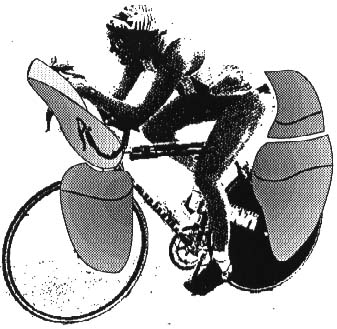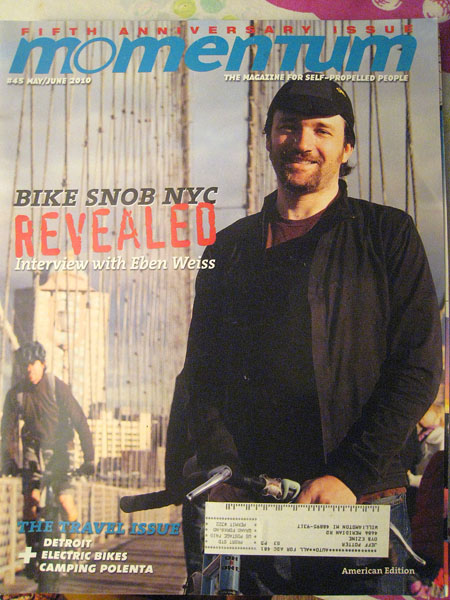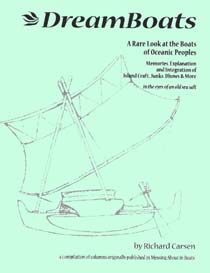The Aerobag Invention
Aerodynamic Panniers for Easier and/or Faster Touring or Errands
by Jeff Potter
Bicycling is a big activity. It covers a lot of area and can lead you far and wide. Touring can lead to racing. Then to commuting. Then to research. Then to inventing. Or all of the above.
One day while commuting my pleasant route to work, I daydreamed about fairings. (Now, I know daydreaming is indulgent distraction-I should’ve been simply enjoying the ride as it was, but noooo…I drifted into fantasyland as is my wont.) I thought fairings might really make a dent in the headwind I was fighting. I also knew that fairings usually wrapped around exotic HPVs. And that only one brand worked for regular bikes and it wasn’t what I wanted. I’d also used aerobars before and found them fast, quiet and comfortable. But it seemed like more could be done. What about all that air rushing over the legs? And wasn’t there a story about an oldtime racer who set a record using a fairing that stuck out from the rear like a cone-shaped tail? Hmmm, I thought it’d be neat to fair the front and back of an upright bike into a smooth, modular form.
And couldn’t all that enclosed space be used to hold stuff? Basically, my faired shape reminded me of aerodynamic panniers. Why not just make them so? Wouldn’t that look cool? Little did I know the road this project would send me down….
To start, I did some computer modeling by scanning in pictures of tri-bar riders, then pasting cute curvy aero-panniers into strategic position. It looked good, unobstrusive, effective.
I bought styrofoam and glued it into blocks and cut the blocks with a hacksaw. Then I smoothed them and painted them a flashy gold. Then I mounted them to front and rear racks. If usable versions were ever made, they’d clip on just like regular panniers. They’d have zip-lock seals to access each egg-like unit. Cool!
I whizzed up and down the road with my new rig. It was amazingly quiet to ride. Not a bit of wind hit me. It seemed dang quick. Zoom! I rumbled past you before you knew it.
But how to test it? Clearly, I had to pull the Superbike behind the pickup at high speed, with me aboard it holding onto a water-ski rope. The rope would be attached to a spring scale in the truck bed where scientists could make accurate measurements. Then I’d switch to a regular bike. The Superbike should be a easier to pull at high speeds. Perfect! as Ed Wood would say. And you can imagine the cast of actors I pulled together for this little experiment. Brothers, friends, girlfriends, and a cousin.
And what a scene it was. When you’re being pulled at 30 mph, there’s no control. When I’d let go the tow rope all kinds of neat things would happen. Speed wobbles, and the tow handle bouncing wildly, rope flailing as my bike would try to tangle in it. …Initially Cousin Jon was to ride the regular bike and I’d just pass the tow rope off to him for those readings. Right. It was obvious that only one stunt rider could be asked to do this job.
The Superbike had equal or slightly less drag than the regular bike, which was 15 pounds lighter in weight. Ta-dah! Results look promising, but more testing needed, as they say.
Then I discovered the “Recumbent Cyclist News” magazine…and fell into a sea of aerodynamic info. I found addresses for fairing material suppliers, all kinds of things. (And once more avoided simply living my day as it was….)
Then I bumped into the HPV@sonoma.edu email list. And began an interesting voyage into the world of HPV experts.
There I learned better ways of making fairings. One list subscriber suggests cardboard patterns taped over bent wire then sprayed with waterproofing. Light, cheap, easy, rugged. Ideal for testing. Doesn’t that sound fun? (In the end I discovered that coroplast is cheap, light, waterproof, rugged, easytouse and is its own frame—so that’s my fairing material of choice.)
…Or maybe I’ll just learn welding and whip up a recumbent frame and forget about sore-butt-arm-feet-neck ‘wedgie’ bikes altogether. (Or you could save time and probably money by buying a $500 used/$1000new elegantly-designed already-built bent that only weighs 30#—like I did with my Vision ATP R40. Now I have a better idea how to weld up the IDEAL frame for me!)
I think my aero-handlebar-bag would be most useful. …Much more so than the carbon “Bullet” aerobar pod already on the market (which has no stowage).
While driving across country the last time I noticed that nearly all cyclotourists had aerobars. I noticed the headwinds they were fighting across the Prairie which made my Michigan headwinds look tame. My pod-packs could really help them out.
Just another whacky idea….
[pictures to come]
[UPDATE: In the meantime, here’s a link to another OYB rant about the subject: https://www.outyourbackdoor.com/articles/bikes_a/fairings-for-upright-bikes-2348/.]




